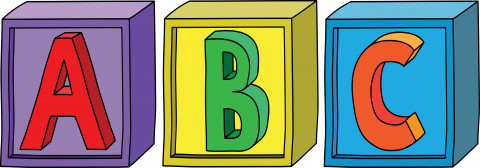News
The ABC’s of the EHS Alphabet Soup: Part 1
I consider the Certified Safety Professional®, the Certified Industrial Hygienist, and the Certified Hazardous Materials Manager the EHS Triad of Certifications; individuals who have achieved these credentials have demonstrated knowledge across the main areas where EHS professionals often hold responsibility. Although credentials do not automatically make someone an outstanding safety professional, anyone who has spent any time in the environmental health and safety (EHS) field is well-aware that there are many EHS-related credentials available.
Although I have not been able to verify this myself, I have been told that there are somewhere around 200 different EHS-related credentials in the market. With all these options, what does it all mean? Which ones should you spend your hard-earned money and limited time preparing for? What is there outside of the EHS Triad?
I think it is important to understand what a professional certification is. Professional certifications are credentials that are administered by organizations intended to demonstrate that the holder has met a minimum amount of education, experience and possesses a certain level of I think it is important to understand what a professional certification is. Professional certifications are credentials that are administered by organizations intended to demonstrate that the holder has met a minimum amount of education, experience and possesses a certain level of knowledge in a field.
To obtain a professional certification requires applying and paying a fee, a review of your work experience, and education, as well as passing an examination. Since professionals are expected to remain up to date on what is happening in the industry, professional certifications also typically require you to remain practicing in the field as well as completing some sort of continuing education to maintain the certification. If you hold a professional certificate and fail to meet these continuing education and experience requirements, you can have the credential rescinded. Some well-regarded examples of professional certificates include the Certified Safety Professional®, Certified Industrial Hygienist, and the Certified Hazardous Materials Manager.
This contrasts with certificate programs. Certificate programs are typically offered by universities or other organizations after completing a prescribed set of courses. Although each course that makes up the certificate program might have exams needed to pass the course, the overall awarding of the certificate does not rely on completing an exam. Another key distinguishing characteristic of a certificate program is that they do not require periodic re-certifying or continuing education: once earned, a certificate is held by individual forever. One example of an EHS-related certificate is the Certified Safety and Health Official (CSHO), but many universities offer certificates in Industrial Hygiene, Environmental and Occupational Health Sciences, and other EHS-related fields.
Another category of a type of credential you might see in the EHS field is a license. A license is issued by a governmental agency and typically grants the holder permission to perform certain activities that others are not allowed to do. Licensing often requires that certain educational and experience requirements be met, as well as continuing education. In this way, they are like professional certifications. However, licenses are issued by individual states, which means that if you move from one state to another, you would need to either apply for reciprocity within the new state or get licensed in the new state to perform that licensed activity. Examples of licenses you might see in EHS include the Professional Engineer or Licensed Medical Physicist.
Obviously, if you need to perform a licensed activity, then you need to hold the appropriate license. But when it comes to getting a certificate or certification, what should you do? Well, I think the answer comes down to what you’re trying to achieve. If you are trying to gain knowledge on a subject and want some verifiable documentation of coursework without all that goes along with getting a degree, then a certificate program is a good option. Certificate programs can often be completed in less time than a degree, at less expense, and the courses are often interesting and high-quality (depending upon the provider).
When it comes to what is recognized by potential employers, professional certifications are where it is at. But, when you choose to begin your path towards professional certifications, you need to make sure you’re choosing the right one. There are organizations out there that put out “certifications” that require you to do nothing more than fill out an application and pay them a fee and then they will send you a certificate with your name on it. In my opinion, these “certifications” are not worth the paper that the certificate is printed on. For a valid EHS certification, you want to look for a few things.
First, make sure the certification requires you to complete an examination. Any certification that will award the credential without requiring you to complete and pass an exam means nothing. Next, find a certification that holds a third-party accreditation. Third-party accreditation of your certification means that an outside organization has evaluated the processes used by the certifying organization and confirmed that it follows best practices to ensure a high-quality credential. Finally, make sure your credential requires some type of periodic re-certification and completion of ongoing professional development activities. Although the credentials that make up the EHS Triad check all of the boxes when it comes to professional certification, there are many others out there that may be worth considering.
Next time, I will share my perspectives on preparing for professional certifications.
William J. Pate, DrPH, MBA, CHP, CIH, CSP, CHMM
The views and opinions expressed in this article are those of the author and do not necessarily reflect the official policy or position of Bowen EHS.


